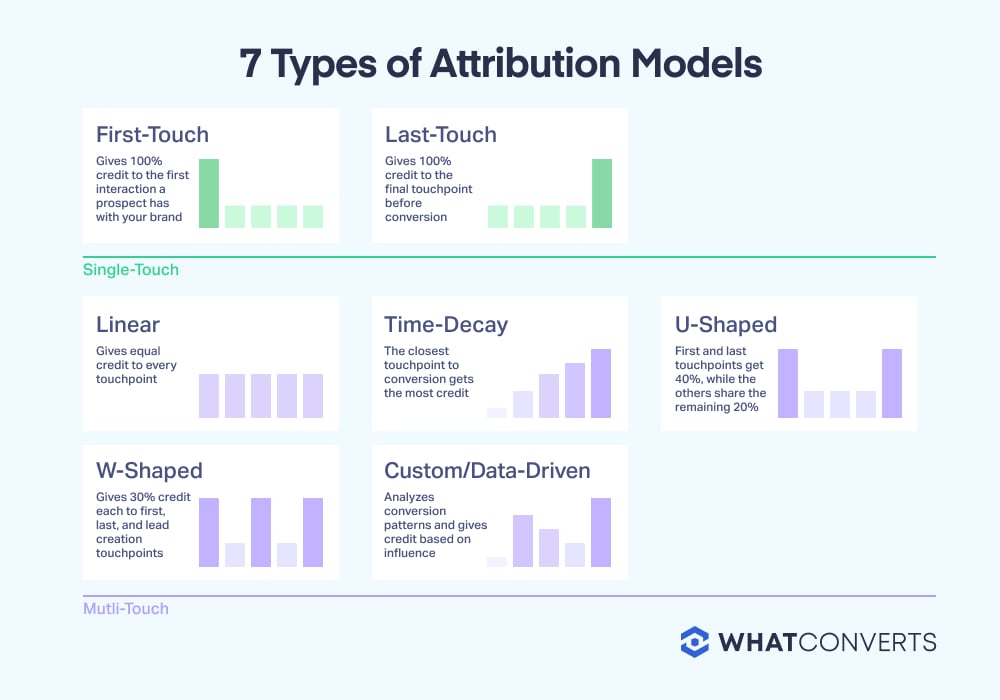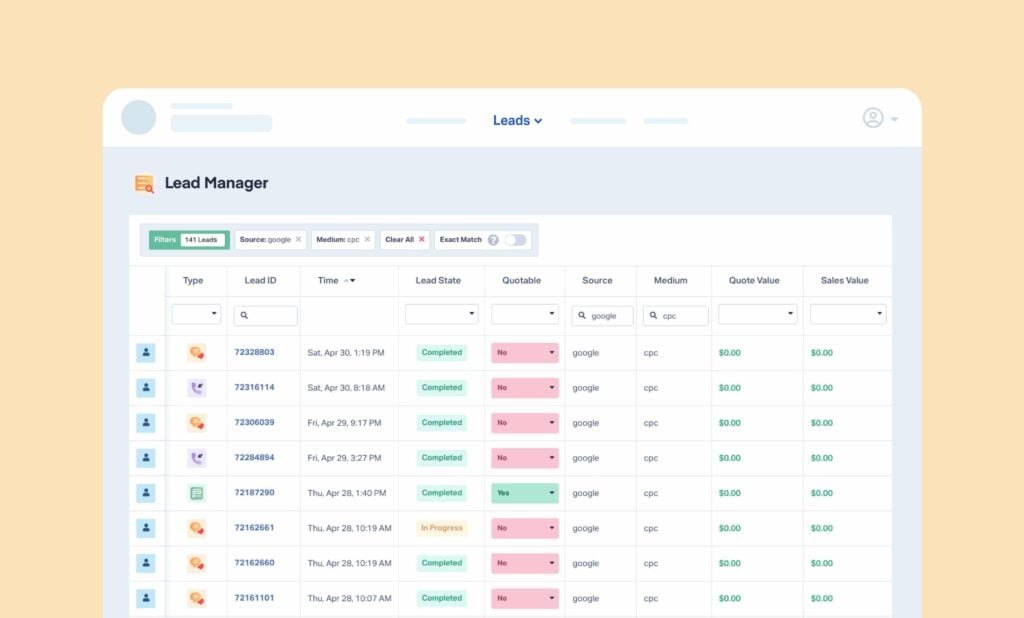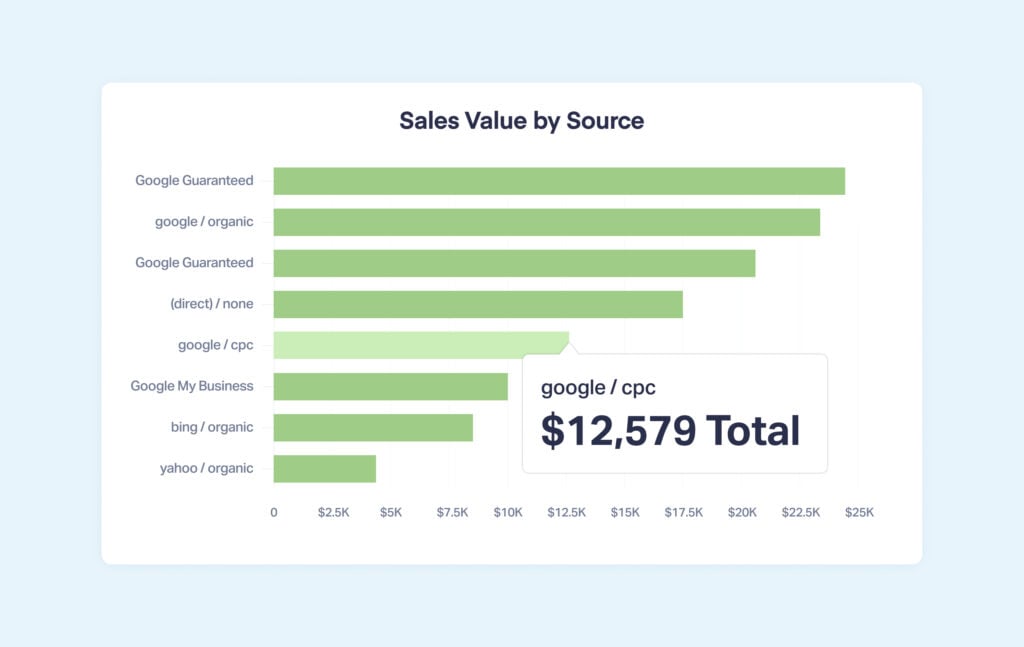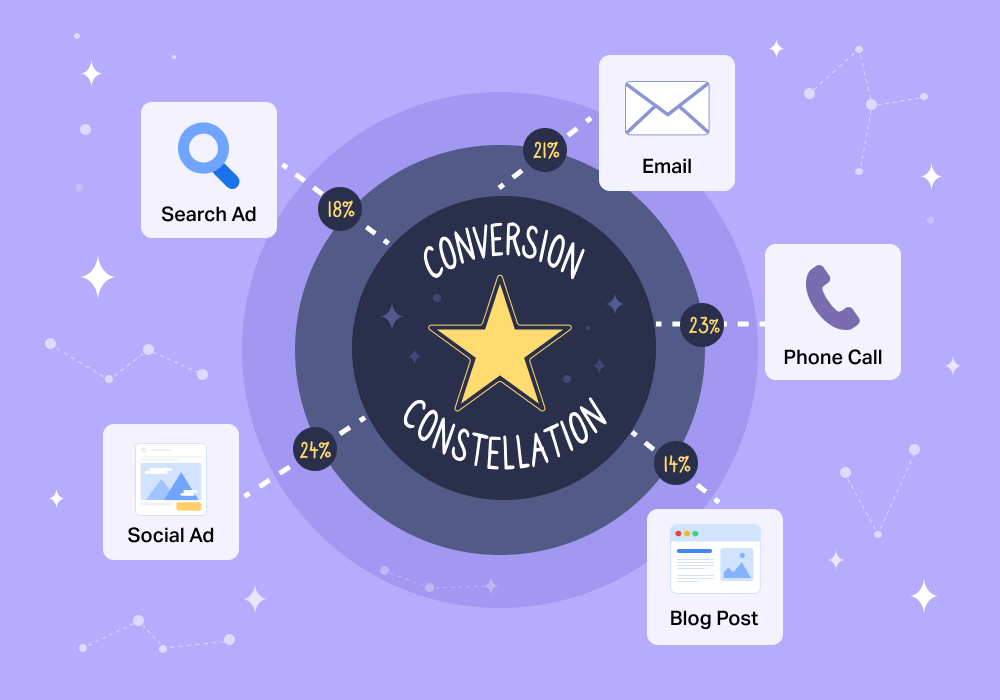
Marketing attribution has never been more complicated—or more essential.
With buyers bouncing between search ads, social posts, emails, and landing pages before ever converting, multi-touch attribution is becoming more and more relevant. By assigning credit across the entire customer journey, this approach helps marketers see what’s actually driving revenue, not just what shows up last in the funnel.
In this guide, you’ll learn the most effective multi-touch attribution models, how to implement them, and why they’re key to smarter strategy and higher ROI.
Definition and Importance of Multi-Touch Attribution
What Is Multi-Touch Attribution?
Multi-touch attribution (MTA) is a marketing measurement strategy that assigns proportional credit to multiple touchpoints along a customer’s journey, not just the first or last interaction. It provides a more complete view of how various channels and campaigns work together to influence conversions, such as form fills, phone calls, or purchases.
Each touchpoint—whether it’s a paid search ad, an email click, or a visit to a landing page—contributes a piece of the overall conversion story. Multi-touch attribution captures those contributions using either predefined models or algorithmic analysis.
For example, if a law firm prospect visits four different pages on your site—a blog article, a service page, an about page, and a contact page—each of those pages would get some share of “credit” when that prospect becomes a customer. 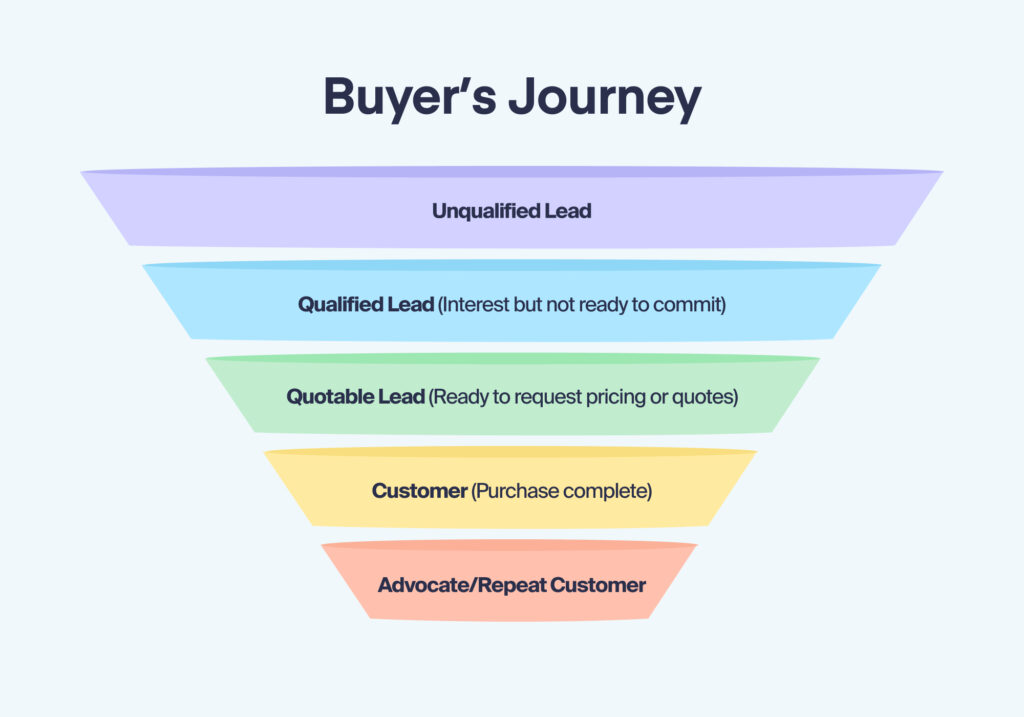
Why It’s Essential in a Multi-Channel World
Customer journeys have evolved. Buyers might begin with a search, engage with social content, revisit through retargeting, and convert after receiving an email, often across multiple devices and over days or weeks.
Multi-touch attribution is designed to reflect this reality. By accounting for every interaction along the way, it enables marketers to:
- Understand how different marketing efforts collaborate to drive results.
- See which touchpoints are influential at each stage of the funnel.
- Make more informed decisions about budget allocation and campaign strategy.
This visibility is particularly valuable as marketing teams work across more channels and platforms than ever before.
Resource: Maximize Lead Generation with Multi-Touch Attribution Software
A Foundation for Smarter Optimization
By measuring the combined influence of various touchpoints, MTA supports more effective marketing strategies. It enables you to shift from relying on assumptions or isolated metrics to acting on data that reflects the full picture.
In fact, industry research shows that over half of marketers were using MTA by 2024, and a growing share cite it as a foundational tool for measuring performance across the funnel.
Multi-touch attribution doesn’t replace other models—it adds depth.
For marketers seeking to improve ROI, reduce wasted spend, and better understand the buyer journey, it offers the clarity needed to optimize with confidence.
Benefits of Multi-Touch Attribution
Multi-touch attribution (MTA) offers more than just better reporting—it equips marketers with actionable intelligence to improve performance across the funnel. By illuminating how marketing touchpoints work together to drive conversions, MTA helps you make smarter, more strategic decisions.
Here are the key benefits of adopting multi-touch attribution.
1. Holistic View of the Customer Journey
Multi‑touch attribution shows the full path to conversion, revealing how awareness touches, mid‑funnel engagements, and final triggers work together. With this end‑to‑end visibility, you can see which content or channels assist conversions and uncover hidden influencers that single‑point models overlook.
You can see the full customer journey in WhatConverts on an individual lead level. Just:
- Click “View Lead”.
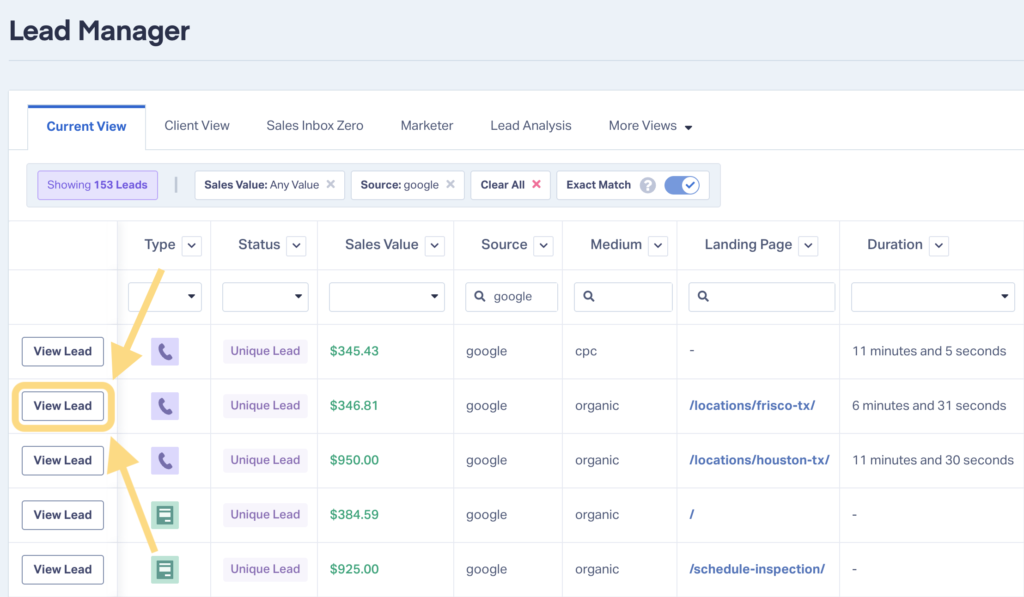
- Scroll through a lead’s entire customer journey with your marketing, from first click to final purchase.
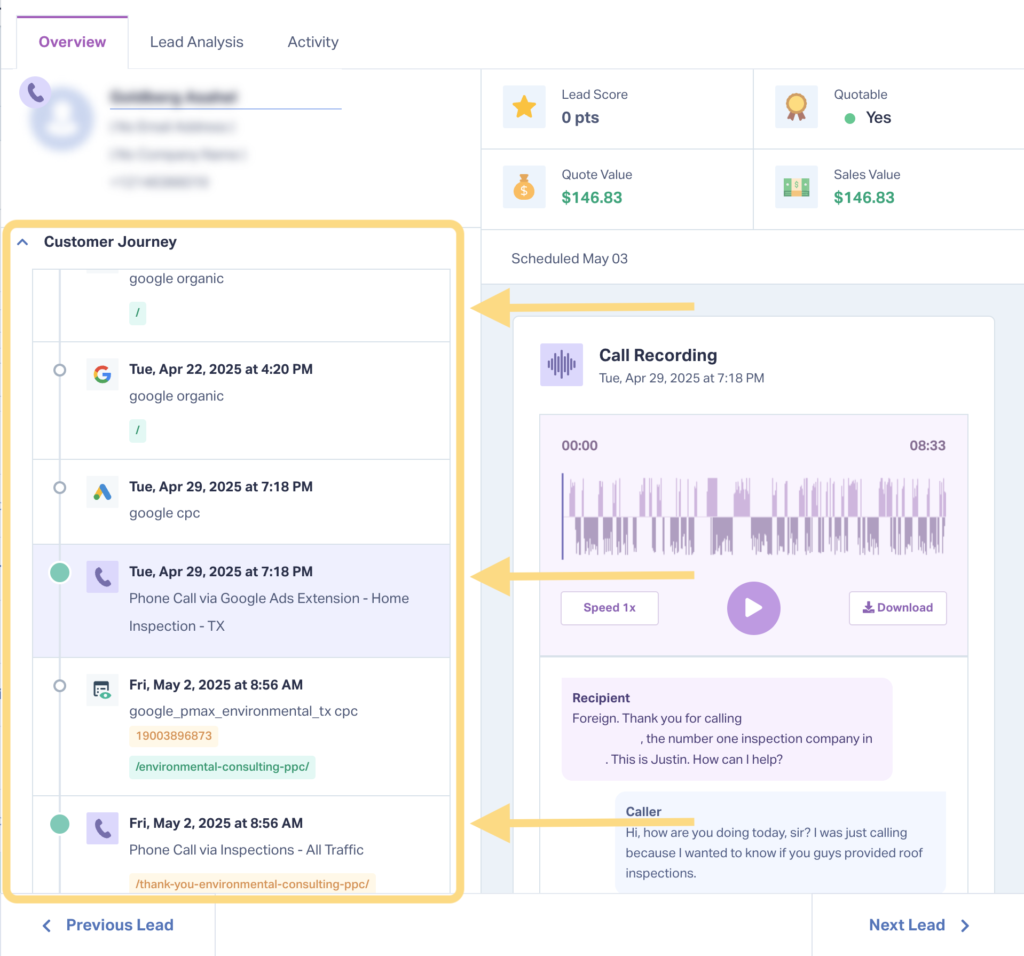
2. Smarter Budget Allocation (+ Proven ROI Upside)
Seeing every touchpoint’s real contribution lets you invest with precision:
- Reallocate spend from low‑impact channels to proven performers.
- Justify funding for mid‑funnel tactics that quietly move deals forward.
Marketers who paired data‑driven, multi‑touch models with automated bidding cut cost‑of‑sales by 18 % versus using last‑click attribution alone—proof that smarter allocation boosts the bottom line.
3. More Accurate Channel‑Performance Measurement
Because credit is shared proportionally, MTA removes first‑/last‑touch bias and delivers trustworthy insights, clarifying which campaigns spark high‑intent leads, which channel combinations work best, and how supporting assets like email nurture prospects toward conversion, all in one report.
Comparison with Single-Touch Attribution Models
Attribution models are not one-size-fits-all. While multi-touch attribution provides a comprehensive view of the customer journey, single-touch attribution models still serve specific, valuable purposes—especially when clarity or stage-specific insights are needed.
This section breaks down how the two approaches differ and when each is most useful.
Single-Touch Attribution: Focused and Straightforward
Single-touch attribution assigns 100% of the conversion credit to a single interaction—typically the first touch (which sparked interest) or the last touch (which closed the deal). These models are:
- Simple to implement: Most analytics platforms support them by default.
- Easy to interpret: They offer a clear answer to “what started or ended this journey?”
- Helpful for channel-specific goals: For example, evaluating how well paid search drives awareness (first-touch) or how effective email is at converting leads (last-touch).
While they don’t capture the full funnel, single-touch models can lead to valuable insights across organizations of any size.
In WhatConverts, you can switch between multiple single-touch models: 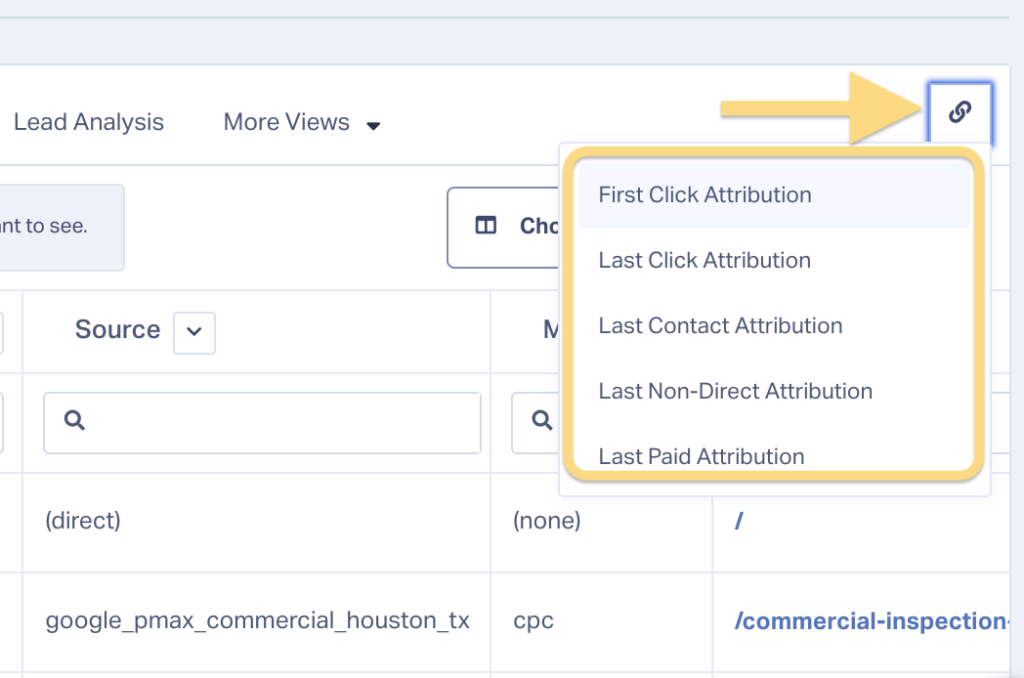
And even compare attribution models for more nuanced insights: 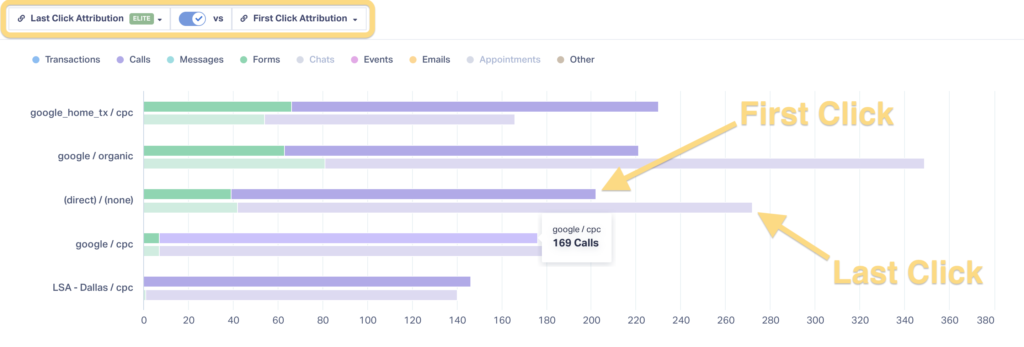
Multi-Touch Attribution: Comprehensive and Contextual
Multi-touch attribution, on the other hand, distributes credit across multiple interactions. This allows marketers to understand:
- Which touchpoints support conversions throughout the journey.
- How channels work together, rather than in isolation.
- What combinations of efforts actually lead to outcomes.
This model is especially valuable for longer buying cycles, multiple-device journeys, or multi-channel campaigns, where understanding only the first or last touch falls short.
When to Use Each Model
Here’s a high-level comparison to guide model selection:
| Use Case | Best-Fit Model |
| Measure initial brand discovery | First-touch attribution |
| Track the last interaction before conversion | Last-touch attribution |
| Understand full-funnel performance | Multi-touch attribution |
| Allocate budget across multiple channels | Multi-touch attribution |
| Get quick, stage-specific insights | Single-touch attribution |
| Optimize cross-channel campaigns | Multi-touch attribution |
Many marketers use a combination of both approaches. For example, they might monitor first-touch metrics for awareness goals, last-touch for conversion efficiency, and multi-touch attribution for budget planning and strategic optimization.
Types of Multi-Touch Attribution Models
Not all multi-touch attribution (MTA) models assign credit in the same way. Depending on your business goals, sales cycle length, and marketing strategy, different models can offer more accurate and actionable insights. This section breaks down the most common MTA models and when to use them.
1. Linear Attribution (Even Weighting)
How it works: Credit is distributed equally across all touchpoints in the customer journey.
Best for:
- Simple journeys with a few interactions.
- Marketers who want a neutral starting point.
Example: If a lead interacts with four marketing channels before converting, each channel receives 25% credit.
| Pros | Cons |
| - Easy to understand and implement. - Ensures no touchpoint is overlooked. | - Assumes all touches are equally influential, which may not reflect reality. |
2. Time Decay Attribution
How it works: Touchpoints closer to the conversion receive more credit than earlier ones.
Best for:
- Shorter sales cycles.
- Scenarios where later-stage actions are known to be more decisive.
Example: An ad click one day before conversion gets more credit than a blog view 10 days earlier.
| Pros | Cons |
| - Emphasizes bottom-of-funnel actions. - Useful when timing plays a key role in conversion. | - Can undervalue early touches that sparked initial interest. |
3. U-Shaped Attribution (Position-Based)
How it works: Most credit goes to the first interaction and the lead conversion touchpoint. Remaining credit is split among middle touches.
Best for:
- B2B or lead-gen marketers focused on awareness and lead capture.
Common weighting: 40% to first touch, 40% to lead conversion, 20% split among middle touches.
| Pros | Cons |
| - Highlights top-of-funnel discovery and lead generation. - Still acknowledges mid-funnel interactions. | - May downplay the role of nurturing efforts between lead and conversion. |
4. W-Shaped Attribution
How it works: Credit is distributed among three key milestones: first touch, lead creation, and opportunity creation. Remaining credit is shared across other touches.
Best for:
- B2B marketing with a clear sales pipeline.
Common weighting: 30% each to the three key stages, 10% shared among the rest.
| Pros | Cons |
| - Aligns with structured B2B funnels. - Recognizes marketing's role in opportunity creation. | - Not applicable if your funnel doesn’t include an opportunity stage. |
5. Full-Path Attribution (Z-Shaped)
How it works: Extends W-shaped attribution by adding a fourth milestone—final conversion or deal close.
Best for:
- Long, complex sales cycles with multiple stakeholders.
Common weighting: 22.5% to each of four stages, 10% spread across the rest.
| Pros | Cons |
| - Offers a detailed view of marketing’s contribution across the full lifecycle. - Ideal for enterprise B2B environments. | - Requires well-defined stages and robust CRM integration. |
6. Custom Attribution Models
How it works: Marketers define their own credit weights based on internal data, industry benchmarks, or historical patterns.
Best for:
- Organizations with unique funnels or niche goals.
- Teams with analytics resources and historical data.
| Pros | Cons |
| - Fully tailored to your business. - Allows prioritization of touchpoints that matter most to you. | - Can be complex to build and validate. - Requires consistent testing and refinement. |
7. Algorithmic or Data-Driven Attribution
How it works: Machine learning models analyze large volumes of data to assign credit based on actual observed outcomes.
Best for:
- Teams with high conversion volumes and access to advanced tools.
| Pros | Cons |
| - Continuously adapts based on new data. - Captures complex patterns and channel interactions. | - Often a “black box”—hard to interpret. - Requires significant data and trust in the algorithm. |
Choosing the Right Model
There’s no single “best” model—each serves a different purpose. Many marketers start with a rules-based model (like linear or U-shaped) and evolve toward custom or algorithmic approaches as their data maturity grows.
Whichever model you choose, the goal is the same: to reflect the real influence of marketing on conversions and to use those insights to drive better decisions.

Challenges and Limitations of Multi-Touch Attribution
While multi-touch attribution (MTA) offers powerful insights, implementing it effectively requires navigating a number of practical challenges. Understanding these limitations upfront helps marketers set realistic expectations and build more resilient attribution strategies.
1. Data Collection and Tracking Gaps
Multi-touch attribution is only as good as the data it uses. But tracking every touchpoint across platforms, devices, and channels isn’t always straightforward.
Common issues include:
- Users switching devices (e.g., mobile to desktop).
- Incomplete UTM tagging or pixel placement.
These tracking gaps can skew attribution results and underreport the influence of key interactions. Solving this often requires first-party cookies, login-based tracking, or unified ID systems—and consistent tagging hygiene.
Resource: Ready or Not – Third-Party Cookie Deprecation Is Here
2. Attribution Window Limitations
Every attribution model operates within a defined time frame (e.g., 30, 60, or 90 days before conversion). But customer journeys don’t always fit neatly within those windows.
- A short window may miss early-funnel interactions that sparked interest.
- A long window might include irrelevant or low-impact touches.
Striking the right balance is essential. B2B marketers, in particular, should align attribution windows with the average sales cycle duration to avoid misallocating credit.
3. Integration of Offline Touchpoints
Many marketing efforts happen outside of digital environments—think events, phone calls, or showroom visits. These interactions are easy to overlook in a digital-first attribution model.
Without proper integration, offline channels often get zero credit, even if they were instrumental in the conversion. Tools like call tracking software (such as WhatConverts) can help bridge this gap by tying offline interactions back to online sources.
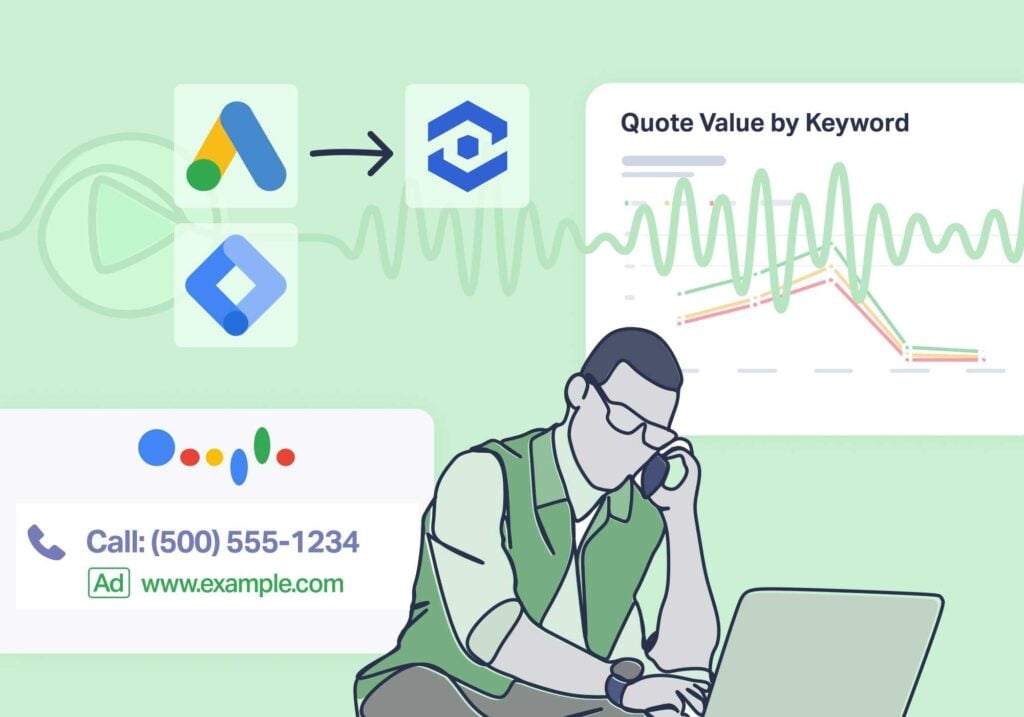
4. Model Bias and Simplification
Every attribution model—whether rules-based or algorithmic—comes with assumptions. Some models naturally favor specific touchpoints:
- Time decay prioritizes later-stage interactions.
- U-shaped emphasizes the beginning and lead-conversion stages.
If the model doesn't reflect your real buyer behavior, you may misattribute value and make suboptimal decisions. This is why some teams compare multiple models before settling on one, or build custom weights based on internal benchmarks.
5. Privacy and Compliance Constraints
As privacy regulations evolve (e.g., HIPAA, GDPR, CCPA), tracking individual user behavior has become more complex. Technologies like Intelligent Tracking Prevention (ITP) and cookie consent banners can reduce visibility into the full customer journey.
Marketers must balance attribution needs with privacy compliance—often by leaning on first-party data, anonymized tracking, or aggregated insights.
6. Technical and Resource Demands
Multi-touch attribution isn’t plug-and-play. It often requires:
- Cross-platform data integration (e.g., ads, analytics, CRM).
- Clean, unified user-level identifiers.
- Skilled analysts or technical support to manage and interpret the data.
For smaller teams, the effort can be daunting. However, emerging tools like WhatConverts are making MTA more accessible, without needing a dedicated data science team.
7. Attribution ≠ Causation
A final but critical limitation: attribution models measure correlation, not causation. Just because a touchpoint appears in a conversion path doesn’t mean it directly influenced the outcome.
To validate true lift or incrementality, marketers should consider running A/B tests or holdout experiments alongside attribution reporting.
Choosing and Implementing Attribution Models
Selecting the right multi-touch attribution (MTA) model—and implementing it effectively—is a critical step toward unlocking meaningful insights. But with so many options, tools, and variables to consider, it can feel overwhelming. Here’s a structured approach to help you make confident decisions and get started without a data science team.
1. Define Your Conversion Goals
Start with clarity. What are you trying to measure?
- Is it qualified leads, form submissions, purchases, or demo requests?
- Do you have multiple conversion types with different values (e.g., an eBook download vs. a sales-qualified lead)?
Defining clear key performance indicators (KPIs) ensures your attribution model is built around what matters most to your business, not just what’s easy to measure.
Tip: Align your attribution goals with broader business outcomes, like cost-per-acquisition or pipeline contribution.
2. Map Your Customer Journey
Understanding how prospects move from awareness to conversion is essential for choosing a relevant model. Ask:
- How many touchpoints are typical?
- Are they concentrated in a short window or spread over weeks/months?
- Do you have clearly defined stages, like lead creation or opportunity?
This helps determine whether a simpler model (like linear or time decay) or a stage-based model (like W-shaped or full-path) is a better fit.
3. Choose the Right Attribution Model
Based on your customer journey and goals, pick a model that reflects your reality:
| Journey Type | Recommended Model |
| Short & simple | Linear, Time Decay |
| Lead generation-focused | U-Shaped |
| B2B with sales pipeline | W-Shaped, Full-Path |
| High volume of conversions | Algorithmic (if available) |
| Unique or complex funnels | Custom Model |
Start simple if needed. Many teams begin with a U-shaped or linear model and evolve as data maturity grows.
4. Set Up Cross-Channel Tracking
You can’t analyze what you can’t track. Implement consistent tracking mechanisms across all touchpoints:
- Use UTM parameters on every campaign link.
- Deploy pixels and tags through a tag manager.
- Enable call tracking, form capture, and CRM integration to include offline and mid-funnel touchpoints.
Tools like WhatConverts help centralize all these efforts by linking leads to their originating channels—online or offline.
5. Integrate Your Data Sources
Bring all your touchpoint data into one place. This typically includes:
- Web analytics (e.g., Google Analytics)
- Ad platforms (e.g., Google Ads, Meta)
- CRM (e.g., HubSpot, Salesforce)
- Call tracking or lead capture tools
If you don’t have a data warehouse or analytics team, choose a platform that supports built-in attribution reporting and integrations.
6. Validate and Refine
Once your model is in place and data is flowing, sanity-check your results:
- Does the attribution data align with what your team sees in the field?
- Are key touchpoints being missed due to tracking gaps?
- Does the model’s weighting reflect real buyer behavior?
Don’t hesitate to adjust weights or compare model outputs. Attribution is not a one-time setup—it’s an iterative process.
7. Use Insights to Drive Action
Attribution data only adds value when it influences decisions. Use your model’s insights to:
- Reallocate budget toward high-impact channels.
- Identify undervalued content or campaigns.
- Optimize touchpoint sequencing for better conversion flow.
Most importantly, make attribution reporting part of your regular planning cadence so insights become embedded in your marketing culture.
Best Practices and Tips for Multi-Touch Attribution
Implementing multi-touch attribution is just the beginning. To ensure your model delivers reliable insights and drives real business value, marketers should follow a set of best practices that reinforce data quality, strategic alignment, and continuous improvement.
1. Track and Unify Every Touchpoint
Capture clicks, calls, form fills, chat sessions, and in‑store events in a single source of truth—e.g., WhatConverts. Enforce consistent naming conventions and deduplicate records so every attribution model sees clean, comparable inputs.
2. Align Attribution with Business KPIs
Choose conversion events that map straight to revenue drivers: closed‑won dollars, pipeline velocity, or sales‑qualified leads. When stakeholders see attribution tied to metrics they already track, the insights gain instant credibility and budget. 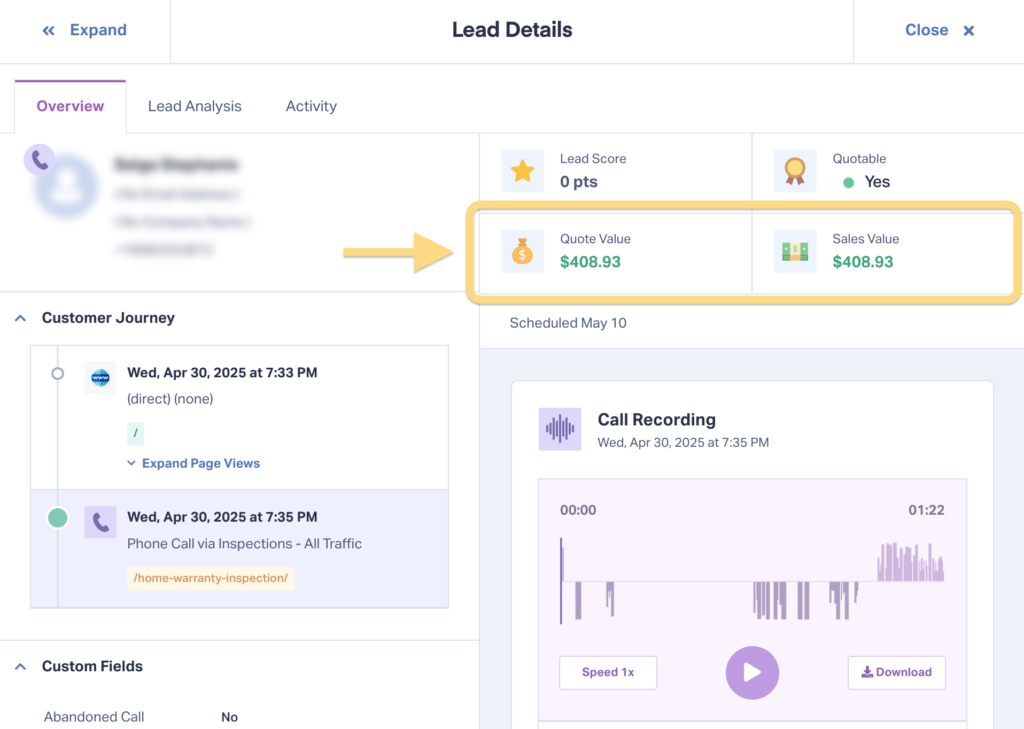
3. Choose (and Iterate) the Right Model
Short B2C cycle → Time‑Decay; Lead‑gen funnel → U‑Shaped; Complex B2B pipeline → W‑Path or Full‑Path. Revisit model fit each quarter and sanity‑check results with sales to catch shifts in buying behaviour before they skew spend.
4. Turn Insights into Budget Moves
Let the numbers dictate action: shift budget to high‑ROI channels, re‑sequence messages to match proven buyer journeys, and retire low‑impact tactics. The fastest wins come from reallocating spend, not adding spend.
Future Trends and Agility in Multi‑Touch Attribution
AI, cookie loss, and channel sprawl are forcing attribution to evolve. Keep an eye on these three shifts—and prepare early:
1. Algorithmic, Self‑Learning Models
Machine‑learning engines now assign credit by mining thousands of real conversion paths and updating weights in near‑real time.
Action: move to platforms that offer data‑driven attribution out of the box and spend your energy on acting, not hand‑tuning formulas.
2. First‑Party, Privacy‑Forward Data
With third‑party cookies disappearing and consent laws tightening, the most durable signals come from your own ecosystem—and must respect user choice.
Action: capture every owned touchpoint (calls, chats, log‑ins), unify them in a CRM or CDP, and pivot to aggregated or consent‑based IDs where individual tracking is restricted.
Resource: A Marketer’s Guide to First-Party vs. Third-Party Cookies
3. Unified Measurement: MTA + Media Mix Modeling
User‑level MTA explains how people convert; top‑down media‑mix modeling (MMM) shows why brand‑level spend works. Merging the two provides both granular and strategic visibility.
Action: adopt a framework that calibrates MTA with MMM so you can validate attribution assumptions, justify upper‑funnel channels, and future‑proof insights as tracking signals fade.
Wrapping Up
If you’re ready to make better decisions with better attribution, you don’t need a data science team—you just need the right platform.
Want to see which leads actually turn into revenue?
Start your free 14-day trial of WhatConverts today or book a demo with a product expert to see how we help prove and grow your ROI.
Get a FREE presentation of WhatConverts
One of our marketing experts will give you a full presentation of how WhatConverts can help you grow your business.
Schedule a Demo
Grow your business with WhatConverts






